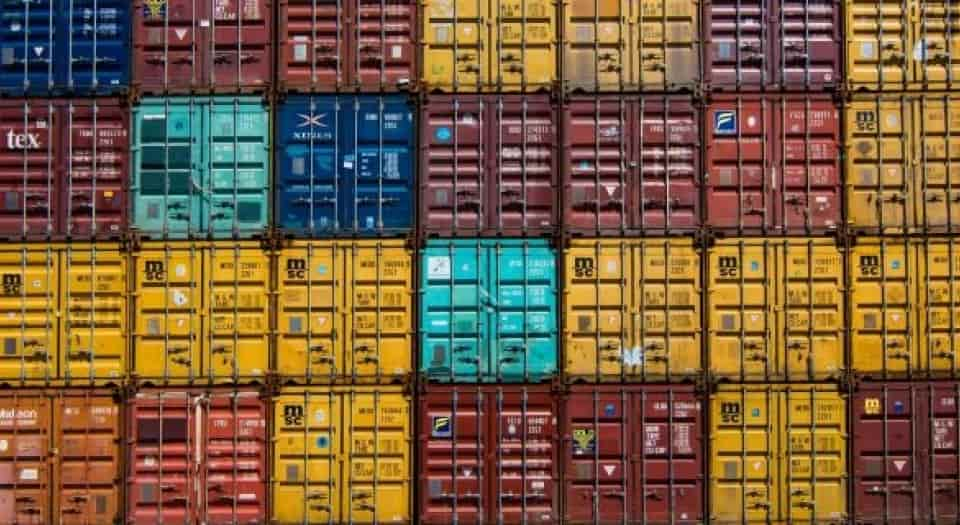Whatever the reasons, we can’t seem to keep up with the panic caused by items disappearing off the shelves. It’s like Black Friday all year round, except people are fighting over baby formula, toilet paper, or bags of flour. As a company, what can you possibly do to avoid the next shortage being your product?
You wake up, dress, and plod to the kitchen, bleary-eyed and still half-asleep. You remember vaguely that your favourite coffee wasn’t in stock yesterday, so decide to head to a café instead. You stumble into shoes, shrug on your laptop bag, and start walking. When the café comes in sight, you’re almost awake, already planning what you’ll order – but there’s not a hint of the normal coffee aroma that usually wafts around the shopfronts. Turns out, it’s not just your favourite coffee that isn’t in stock – it’s almost all coffee.
In this hypothetical future, why would there be coffee shortages?
Well, the supply chain shortages in the coffee market stems from many of the same areas as almost all supply chains. Being a major commodity, you might expect that the market could cope with volatility in supply or demand.
Demand planning, too, should be fairly built into the infrastructure. But, as in most industries, there are different grades of coffee, with different businesses looking for different tastes and niches, and should one area not produce enough one year, the businesses in connection with it can be hit hard. So, when the demands aren’t met, or a shortage of the most popular product causes another product to experience high demand, you’re going to witness the catastrophe that is an availability crisis.
The VUCA World
Your business might not be in coffee or agriculture at all, but the causes of a supply chain shortage can apply to many industries. In fact, it’s a symptom of the VUCA world – the volatile, uncertain, complex, and ambiguous state of our world – that even isolated external events can affect seemingly unrelated industries. Take, for instance, the volatility of political disruption.
After Brexit, several supply chains experienced short-term delays and disturbances due to incomplete trade deals or unprepared traders failing to meet the EU’s customs union’s requirements in time.
While a €17,000 tariff charge for Ghanaian banana imports may have been alarming at the time, far more alarming were prices of more diverse materials. The huge rise in the price of timber, for instance, affected supply chains like construction, luxury goods, textiles, furniture, paper, and fuel. On the one end, it makes products more expensive; an unpleasant result for the consumer.
But simple economics means that the higher price will reduce demand, which has an immediate and devastating effect on all businesses which rely almost solely on timber.
If such market evolutions are anticipated and communicated, be it by data exchange or employees maintaining excellent supplier relationships, they can be better mitigated. Stocks can be built, alternatives can be found, and, in the more difficult cases, political lobbying can encourage lawmakers and negotiators to address future threats. Where such mitigative actions are not taken, the availability of raw goods, finished goods, semi-finished goods, and trading goods will fall dramatically.
Domino Effects
Therein lies the issue of complexity. A fast-paced trading world translates low availability of commodities quickly across whole systems, causing disruption to any process or production point requiring the initial raw good.
The result is that raw goods, in this case timber, are no longer affordable in the same quantities, which slows down production quantity in practically every connected industry.
And right at the roots at all of that is never one thing, either. Complexity means being hit by external factors from practically all angles.
Take this year’s baby formula shortage in the USA. Right now, investigations are ongoing into deadly bacteria having been found in one company’s factory, meaning that all stock from one brand has been pulled.
This puts pressure on other producers who are now contending with stockpiling akin to the beginning of the pandemic, but with a decent chunk of the demand-bearing market no longer available.
That’s now – but baby formula companies in the USA were already contending with massive issues before then. It started with the aforementioned stockpiling in 2020, which saw a ginormous spike in demand met almost immediately by an instantaneous fall. Like many industries, this entailed cuts in production.
So, when demand levelled out again, baby formula makers struggled to meet previous demand, not to mention that which arose from an increased birth rate and decreased breastfeeding rate.
The fact is, these factors are multiple and, to some extent, unrelated. Of course, we could expect demand to rise slightly when birth rates began to soar – but what could have suggested that breastfeeding rates would decline?
And, equally, the US government could have allocated more funds to support baby formula makers during the pandemic-induced economic downtime.
Perhaps with the right support, companies could have been more ready to upscale and combat the supply chain shortage causing panic for parents country-wide.
Similar things occurred in coffee production, with lower demand causing poorer coffee farmers to partly switch crops or even abandon their farms. Now that agricultural problems caused by climate change have been added to the mix, this year’s output of coffee is set to be below average, particularly in South America.
Now, while some people suggest that coffee is to adults what baby formula is to babies, the coffee shortage is not seen as urgently problematic as baby formula.
But any business that includes food or drink services is about to be hit hard by the 80% rise in coffee prices. It's not just hipster speciality coffee spots that will suffer; Lavazza, a coffee bean provider serving many mainstream coffee sellers are having to raise prices significantly.
That’s the effect of a sudden drop in availability, and it’ll impact the production of caffeine-high products like energy drinks, pharmaceuticals, and even some cosmetics.

Is it all just bad luck?
Let’s step away from the external factors for a moment. The truth is, much of the VUCA world’s effects can be far better mitigated than they currently are.
There is a degree of irony here, that many companies experiencing availability issues due to external disruption will lean on VUCA as the sole reason behind their current crises.
The irony lies therein, that for all the volatility, uncertainty, complexity, and ambiguity this era brings, it does create stability, certainty, simplicity, and clarity in one single fact. Pardon the cliché, but VUCA means the only thing you can plan with is chaos.
So, if we all know that we should expect VUCA events, why do businesses continuously seem unprepared for them? Although it may be hard for organizations to admit, a lot of availability problems come down to more internal factors.
Monolithic systems for data, or almost worse, multiple sufficient solutions that prove extremely difficult to integrate contribute a lot to the difficulties of planning.
Even if data is collected well, its usefulness is lost when departments themselves are siloed. This kind of decentralized data storage and lack of data exchange is definitely a top factor in the mismanagement of supply chains, even in non-crisis times.
But while maintaining availability and meeting customer demand is the core aim of a supply chain, there is an endemic lack of transparency in our global supply chain networks.
Whether this is internal in an individual business, or true of buyer-supplier relationships and planning all along the supply chains, no transparency means a limited scope of success in availability / meeting customers’ expectations regarding time, quantity and quality.

Having a vision requires next steps
What to consider? There are three aspects, which should be taken into account, when availability needs to be mastered. They vary in urgency and impact, yet they all need attention.
The first scenario considers short-term effects, where impact needs to be managed effectively.
Companies try to mitigate one availability issue after another. Oftentimes quick fixes instead of sustainable solutions are being used. The downside of this approach is obvious: The employees´ concentration goes down and the efficiency of the processes suffer. Therefore, there is a huge need of having operative management in the Supply Chains in place.
This hasn´t been established until now in most companies.
The second secret sauce is tactical prevention of future issues. Companies are now facing problems, which never occurred in this intensity and frequency before.
They are battling one negative event followed by another and have troubles getting their tactics right for future issues.
This also affects the ability to identify the impact on availability and to reduce it, where possible. To tackle this is issue though, it requires adjustments in the use of information and effects in the Supply Chain to anticipate the future.
Third on the list of “Go-to”- approaches is related to long-term and strategic supply chain management tactics: Stuck in too many crisis at once? This often leads to confusion and people forget to keep the overall picture in mind.
Companies now must focus and sharpen their sensitivity to identify risks early on, evaluate them and make the necessary changes in the supply chains.
By doing so, availability becomes less negatively affected while costs are being reduced at the same time. This strategic approach requires throughout planning, a solid data base and the right tools in place to steer them.
But while decision-makers and management teams fear the effects of VUCA events, they continuously fall short of pursuing resilience and transparency to actually combat them.
While delivering consulting projects or supply chain-analytics-as-a-service to our clients, we see the multi-faceted difficulties that stand between an organization’s current rate of availability and customer satisfaction, and the optimized version.
But with a clearer insight into data, enough transparency and the right data, the first step has been taken. To master your supply chain data, the use of an operational supply chain management analytics systems and automated recommendations and decision-making is a key factor.
Nevertheless, our products aren’t the central theme here, though supply chain consultancies are behind much of the optimizations going on at the moment.
Our central theme for the next few blog posts is in fact (no surprises) availability, and how to manage and ideally avoid supply chain shortages.
We’ll be looking at some of the measures that organizations can take in preparation for disruption, as well as some for mitigating the effects of disruption as it hits. We’ll also discuss the evolution of ‘just-in-time’ systems, as we all enter into a new world where inventory is, perhaps, not as robust as we once believed.
Now, as coffee farmers seek plant varieties able to cope with climate change, you can sip a doubly-expensive cappuccino and learn how your business can achieve excellent levels of availability – despite disruption.




.jpg)



.png)
